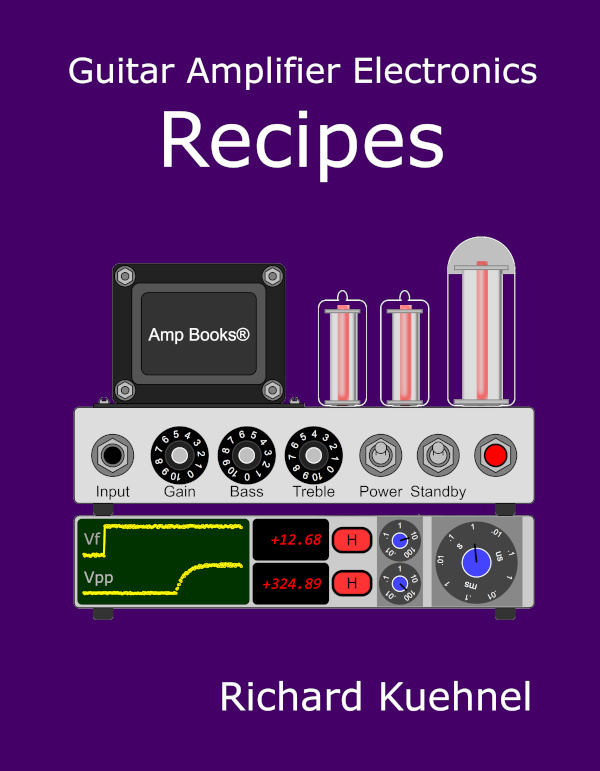The Strange Effects of AC Ripple on a Class AB Power Amp
In 2007 a research team at Technical University Berlin, under the direction of Henry Westphal, conducted research into the effects of AC power supply ripple on the Fender Bassman 5F6-A guitar amplifier. My comments here are based on a final project report written for Project WILDCAT by Thomas Schmidt and Henry Westphal of TU Berlin's Mixed-Signal Fabrication Group.1
When given the choice of an experimental outcome that merely confirms what one assumes to be true and one that completely contradicts that assumption, I'll take the latter every time. Such is the case with these results. The object of TU Berlin's development effort was to design an actively filtered AC power supply for the 5F6-A that would preserve the supply's DC characteristics, most notably the voltage sag that occurs at high power levels, while eliminating AC ripple. The expectation was that the resulting amplifier would retain all the beloved distortion characteristics of the Bassman but with reduced noise. The final outcome, however, was quite unexpected.
The Experiment
In a Class A push-pull power amp operating at full power, both tubes conduct all the time and both continuously participate in the power amplification process. The tubes are configured to oppose each other - as the current in one tube increases the current in the other tube decreases. AC ripple from the power supply causes the current in both tubes to vary simultaneously in the same phase, producing a net effect of zero. For this reason Class A push-pull power amplifiers are relatively immune from AC hum.
In a Class AB amplifier such as the Fender Bassman 5F6-A, both tubes conduct current simultaneously only at low signal levels. Once the signal voltage is sufficient to put one of the tubes into cutoff then the other takes over, acting more like a single-tube amplifier. Under these conditions AC ripple affects only the conducting tube and thus passes unopposed through the output transformer to the loudspeakers. This was the effect that the Project WILDCAT team attempted to suppress: AC modulation of the output signal at high power levels. They were in fact successful in achieving this goal. The consequences, however, were completely unexpected.
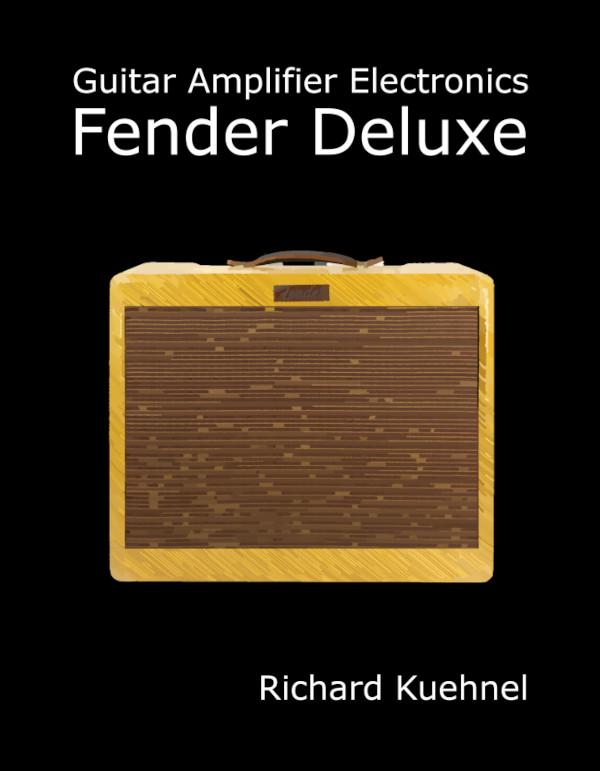
|
Guitar Amplifier Electronics: Fender Deluxe - from TV front to narrow panel to brownface to blackface Reverb |
Tests were first conducted using the original 5F6-A power supply circuit. The following figure shows a full-power signal measured at the 2-ohm output transformer output connected across a 2-ohm dummy load. A 100-to-1 attenuated probe was used, so the voltage levels are 100 times higher than what the display shows.
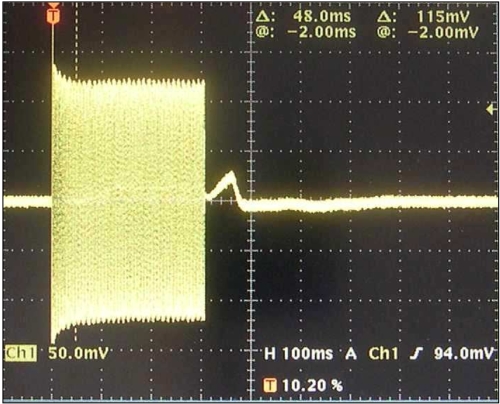
We clearly see the musically desirable effects of power supply voltage sag. When the signal is first applied the output signal amplitude is about 13 volts. The increased load causes the power supply voltage to sag over time, reducing the output signal level to about 12 volts after 50 milliseconds. The next graph expands the time scale to show how AC ripple affects the first 40 cycles of the output signal.
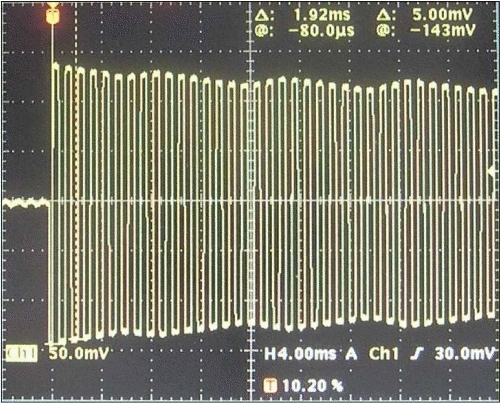
In Europe the AC power line frequency is 50Hz. With a full-wave power supply the ripple frequency is thus 100Hz which is clearly evident in the output shown. Design goal: eliminate the AC ripple while retaining the power supply's sag characteristics.

|
Guitar Amplifier Electronics: Basic Theory - master the basics of preamp, power amp, and power supply design. |
The way the power supply reacts over time is determined by its components and its total effective source resistance. The following schematic shows the 5F6-A power supply and DC current loads.
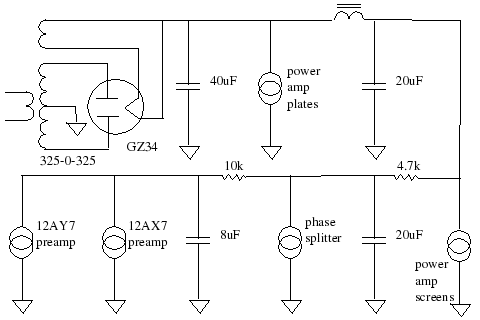
The resistances in the power transformer, the internal plate resistance of the rectifier tube, and the resistance in the choke cause the DC voltage supplying the power amp screens to sag exponentially. The choke and filter capacitors also interact with one another to cause the voltage to oscillate somewhat, as shown in the following figure.2 The graph shows the power supply voltage sag over the first 500 milliseconds after the onset of a full-power signal.
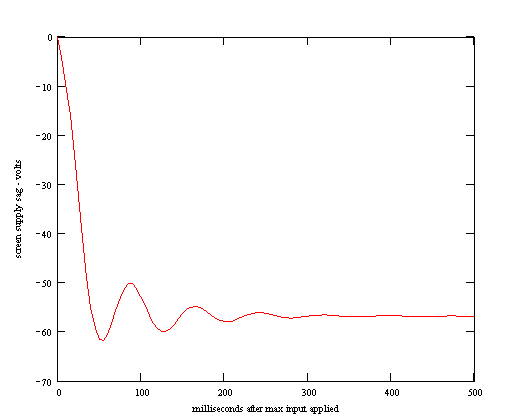

|
Fundamentals of Guitar Amplifier System Design - design your amp using a structured, professional methodology. |
For Project WILDCAT a vacuum-tube voltage regulator with a controllable internal resistance was designed to substantially reduce AC ripple but retain the same power supply sag characteristics, particularly the dynamic nature of the all-important screen supply voltage. The following oscilloscope display shows the screen supply voltage produced by the original 5F6-A power supply when reacting to the full-power signal described earlier.
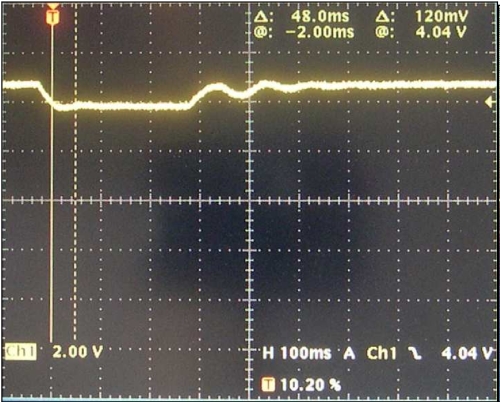
The main component of the voltage sag exponentially decreases with a time constant of 72 milliseconds, the time required for this component of the sag to reach 63 percent of its steady-state value. The choke oscillation can only be faintly observed after the signal is applied, but it is clearly visible when the signal is removed and the power supply recovers. The frequency of oscillation is about 13Hz. The following graph shows how the various components of the sag contribute to the overall shape that is observed.2 The red, solid curve shows the actual sag determined analytically from the 5F6-A schematic. The dotted and dashed curves are the two major components that contribute to it.
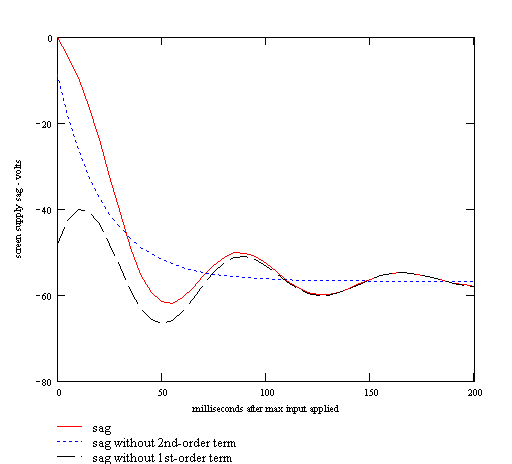
The following graph shows the reaction of the low-noise power supply designed for Project WILDCAT, where the internal resistance was adjusted to match the time constant of the 5F6-A supply. Both the exponential sag and the choke oscillation are indistinguishable from what was observed with the original supply.
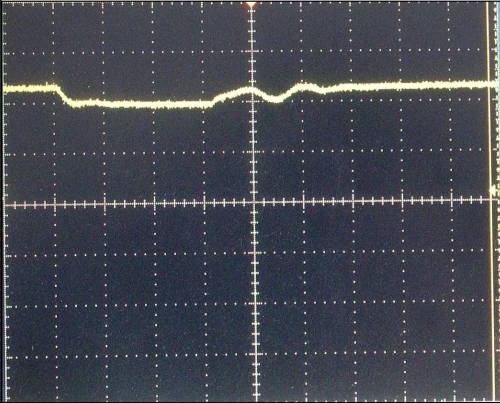
The measured difference in DC grid bias voltage, which continued to be supplied by the original power supply, was less than 0.5 volts. A successful result! But the story doesn't end here. How does the low-noise version of the WILDCAT amplifier sound?
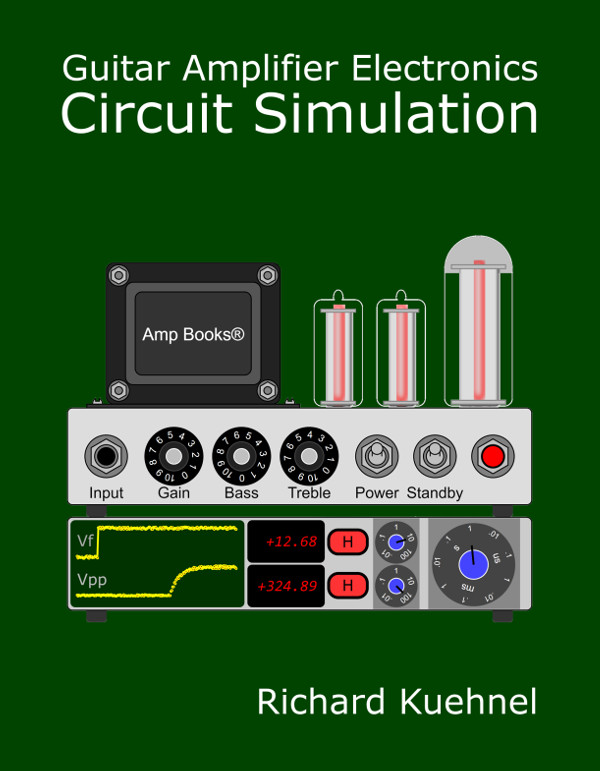
|
Guitar Amplifier Electronics: Circuit Simulation - know your design works by measuring performance at every point in the amplifier. |
The Big Surprise
The Project WILDCAT team summarizes the results this way:
"In spite of the practically identical voltage curves (with the exception of the 100Hz ripple), in terms of sound the amplifier is no longer recognizable. Its tonal characteristics are completely different."
Touch sensitivity - zero. Crisp dynamic overtones - zero. As Schmidt and Westphal put it, the WILDCAT became more like a kitty cat. The new power supply had filtered out more than just noise. It had suppressed the heart and soul of the amplifier!
Since the low-noise power supply had an adjustable source resistance, enabling the amount and rate of sag to be controlled, the team experimented with it a bit. They observed that when sag was eliminated, the amp sounded "limp" and "cheap," like a String 300 transistor amp from an electronics discount store. Nevertheless, even with the proper amount of sag, something was definitely missing from the Bassman's legendary sound.
Conclusions
The WILDCAT team concludes that AC ripple present in the power stage represents much more than just noise. Its modulation of the output appears to have a significant effect on the Bassman's sonic character.
As important as this result is in itself, the team goes on to conclude that if ripple is tonally significant, then a difference in AC line frequency (60Hz in the US and 50Hz in Europe, for example) also has an important impact. Converting between 120 and 230 volts is not difficult. Converting between 50 and 60 Hertz to achieve a particular tone dynamic is a whole different story!
Further Reading
1 Thomas Schmidt and Henry Westphal, "The WILDCAT Low Noise Power Supply," Final Project Report, Project "WILDCAT Guitar Amplifier," (Berlin: Technical University Berlin, 2007).
2 Richard Kuehnel, Circuit Analysis of a Legendary Tube Amplifier: The Fender Bassman 5F6-A, 3rd ed., (Seattle: Pentode Press, 2009).
Acknowledgements
Project WILDCAT was supported by Würth-Elektronik, the Institute for Energy and Automation Technology, and Tigris Elektronik GmbH.

|
From system design concepts to individual stage operation, an all-new examination of Bassman electronics. |
